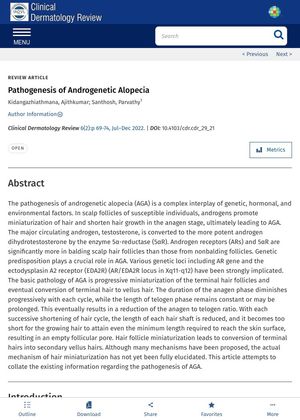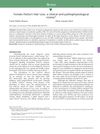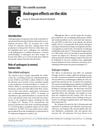Pathogenesis of Androgenetic Alopecia
July 2022
androgenetic alopecia hair miniaturization hair growth phase androgens testosterone 5α-reductase dihydrotestosterone DHT androgen receptors ARs genetic predisposition genetic loci gene polymorphisms dermal papilla hair cycle connective tissue elastin bodies erector pili muscles microinflammation AGA 5-alpha-reductase

TLDR Androgenetic alopecia, or hair loss, is caused by a mix of genetics, hormones, and environment, where testosterone affects hair growth and causes hair to become smaller and grow for a shorter time.
Androgenetic alopecia (AGA) is a complex condition influenced by genetic, hormonal, and environmental factors. It is characterized by hair miniaturization and a shortened hair growth phase due to the role of androgens, particularly testosterone. The enzyme 5α-reductase (5αR) converts testosterone to a more potent androgen, dihydrotestosterone (DHT), and is found in higher activity in balding hair follicles. Androgen receptors (ARs) are also more prevalent in balding scalp hair follicles. Genetic predisposition plays a significant role in AGA, with several associated genetic loci and gene polymorphisms. The dermal papilla, which regulates hair growth, is likely the target of androgen-mediated events leading to follicle miniaturization and alterations in the hair cycle. Changes in the connective tissue beneath the hair follicles, including the presence of small elastin bodies, a decrease in the size of erector pili muscles, and microinflammation, are also observed in AGA.






